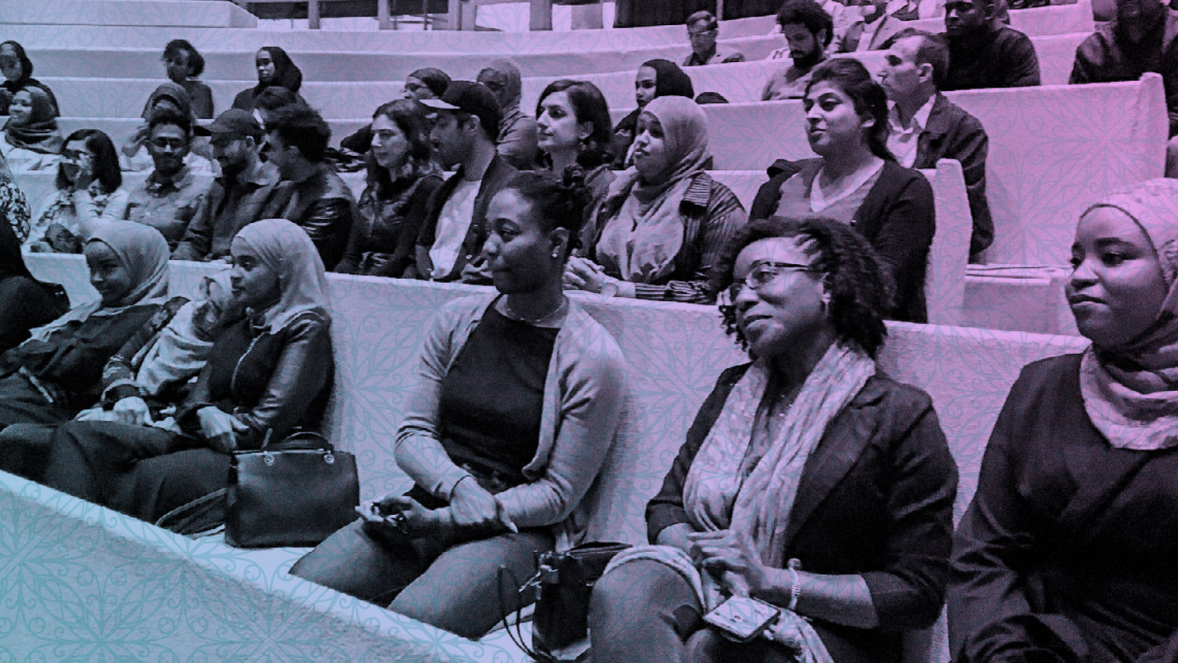New Research on the Canadian Black Muslim Population Offers Actionable Insights
Policy makers, experts and community advocates launch a report and discuss its implications for addressing barriers facing Black Muslim communities in Canada

On Tuesday, Feb. 21, the Diversity Institute (DI) and the Black Muslim Initiative (external link) (BMI) launched a report, Socio-Economic Review of the Black Muslim Population in Canada, with a research presentation and panel discussion. Panelists explored how the new data can be used to inform policy, programs and advocacy work that integrates intersectional understandings of Black Muslim people.
Kofi Achampong, a member of BMI and a lawyer and government relations advisor, moderated the discussion. Panelists were Idil O. Kalif, general director, sociologist, consultant and co-founder of Femmes Noires Musulmanes au Québec (Black Muslim Women in Quebec); Ganiyat Sadiq, executive director of the IAmXMovement; and Fosia Duale Virtue, workshop coordinator at the National Council of Canadian Muslims.
Dr. Mohamed Elmi, executive director of DI, introduced Arielle Kayabaga, Member of Parliament for London West, who spoke about how the findings from the report could be used to guide policy.
“One of the many things that I hear often is the need for research into the existence and experiences of Black Canadians across the country. This really helps us to make informed policy, the right funding decisions and a lot more,” Kayabaga said. “With the data we have today, I think that our job in advocating is greatly improved.”
Dr. Elmi outlined demographic research undertaken by DI on the Black Muslim population, as well as on immigration, education, employment, income and housing.
He noted that most of the Black Muslim population in Canada are immigrants and first-generation individuals under the age of 65 who primarily reside in Ontario, Quebec and Alberta. When compared to the general population, more of the Black Muslim population have not completed a certificate, degree or diploma and are overrepresented in lower income employment categories and underrepresented in higher ones. This has significant implications for household incomes and home ownership levels for Black Muslim people.
“A little over one-quarter own a dwelling: 25.8% versus 75.2% of the general population,” Dr. Elmi said.
Following Dr. Elmi’s presentation, panelists reflected on the report’s findings and its impacts.
“This work is bigger than us,” Kalif said, noting the report highlights the important role that young people and women play in the Black Muslim community, and the distinct challenges they face. He added that the findings further emphasize the need to support Black Muslim organizations that serve these groups.
Sadiq said the report validates many of the challenges that Black Muslim people know to be true. It also illuminates how different barriers compound to affect nearly every aspect of their lives.
Kalif explained that in Quebec specifically, many Black Muslim people cannot openly practise their religion due to Bill 21. The law bans public school teachers, government lawyers, some politicians and other civil servants from wearing religious symbols, like hijabs, at work.
“There’s a lot of barriers,” Sadiq said. “It isn’t just one thing. It is these compounding factors that we need to address.”
Virtue added that those who do a lot of community work are constantly asked to provide evidence-based next steps and action plans to address these barriers. “A report like this gives us that,” Virtue said. “We have data to substantiate projects that are going to impact programs for those that are most vulnerable.” Program designers working with Black Muslim youth, women, entrepreneurs and emerging leaders are just a few examples of those that may be informed by this data.
“This data is like a treasure trove, because oftentimes the pushback that you get from institutions is, ‘Well we don’t really know. This is all anecdotal,’” Virtue said.
"This document is intended to marshall decision-makers toward understanding and addressing barriers that confront Black Muslim communities,” Achampong said. “It not only highlights socio-economic status, demographics and trends, but it also highlights deeply personal narratives of migration, settlement, racism, Islamophobia, family life and young people’s dreams. It's a call to action across sectors, provinces, municipalities, sectors and institutions to ensure this unique demographic has all the tools it needs to succeed and thrive in Canada."
Learn More
Read the Socio-Economic Review of the Black Muslim Population in Canada and watch the discussion (external link) to hear more from our speakers.
